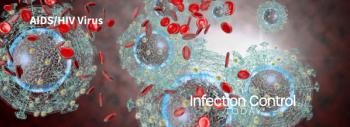
Survey Shows Workers Often Go to Work Sick
A survey conducted by Wakefield Research and sponsored by GOJO Industries reveals some startling facts about how Americans handle illness during the winter germ season:
• Sixty-nine percent of working Americans don't take sick days because they don't want to miss a day of work, even if they're actually sick
• Sixty-two percent of working Americans have gone to work sick
• Nearly 3 in 4 parents have sent their children to school sick
• Sixty percent of those surveyed saw their co-worker sneeze without using a tissue
According to the CDC, approximately 80 percent of infectious diseases are transmitted by touch4 and the CDC recommends hand hygiene as one of the most important steps to avoid getting sick and spreading germs to others. In fact, results from the Wakefield Research Survey showed that of those who didn't get sick last winter-germ season, the majority of them, 67 percent, said hand hygiene is the reason why.
"This survey highlights that hand hygiene must be practiced far more thoroughly and regularly – whether it's at home, in the office or on the go," said Jim Arbogast, PhD, vice president of hygiene sciences and public health advancements for GOJO Industries. "Keeping hands clean by either washing with soap and water or using an alcohol-based hand sanitizer, like PURELL® Advanced Hand Sanitizer, should be second nature for all of us. It's a simple and effective way to prevent you and your family from getting sick and spreading illness-causing germs to others."
The CDC recommends washing hands with soap and water and when soap and water are not available to use an alcohol-based hand sanitizer with at least 60 percent alcohol to reduce germs on hands and decrease the spread of illness-causing germs.
It is important to remember the key moments for practicing hand hygiene. These include:
• Before and after preparing food,
• Before eating
• Before and after caring for someone that is sick or around someone who is ill
• After using the bathroom
• After sneezing or coughing
• After touching anything that is in a high-traffic area that may have been touched by many different hands, such as the grocery cart handle, a phone or a handrail
Source: GOJO Industries, Inc.
Newsletter
Stay prepared and protected with Infection Control Today's newsletter, delivering essential updates, best practices, and expert insights for infection preventionists.






